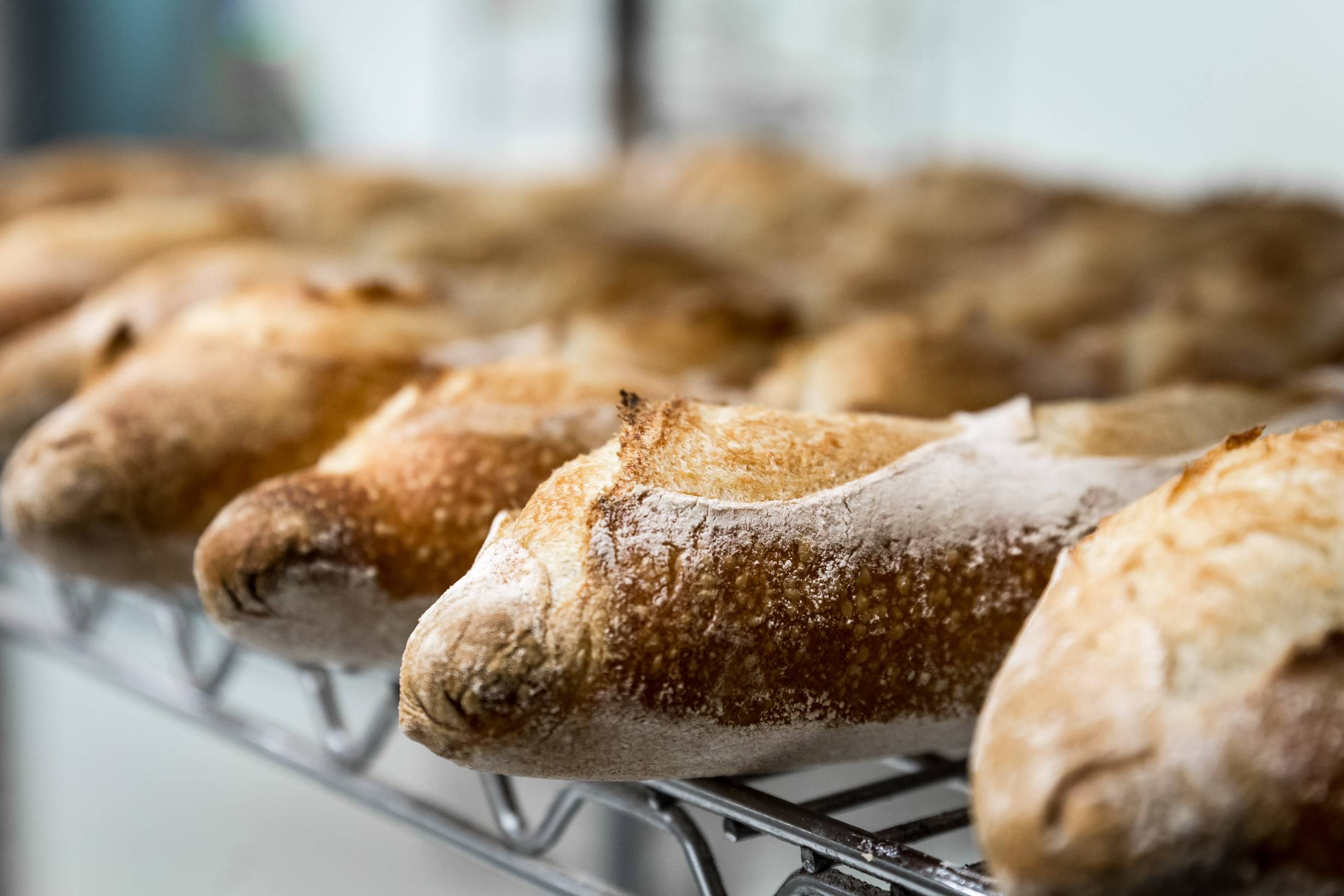Central Illinois Bakehouse is located on First Street in Champaign near the police station. You may know it as Pekara Bakehouse which it has been since 2008 but recently was sold and has since changed names. The bakehouse supplies bread all over town from the Pekara Bistro downtown to the farmers’ market to Hamilton Walker’s — if you’ve eaten Downtown, you’ve probably had the bakehouse bread at some point.
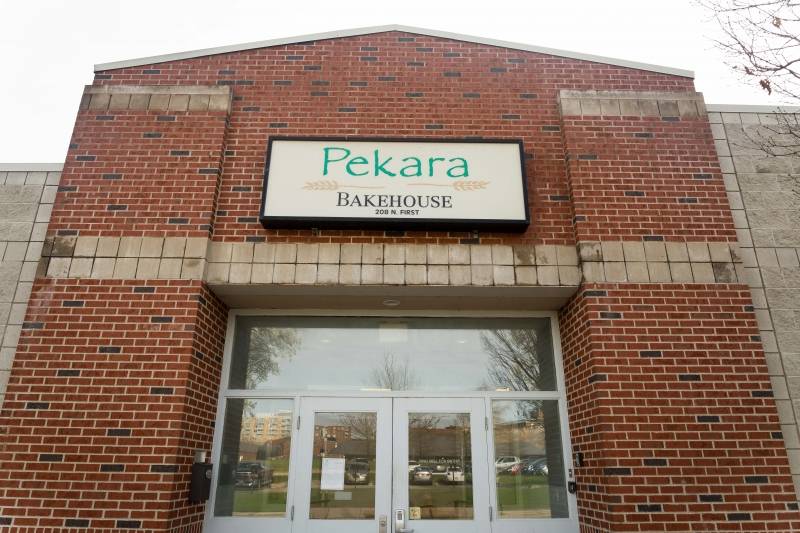
What you probably didn’t know, though, was that the bread from the bakehouse is special. I am not just talking about taste, I am talking about process. The bakehouse makes bread following the ancient way of making bread — not something you’re going to find anywhere and definitely not when you buy a commercially baked bread. Here are the three top reasons the bakehouse standout:
- You can only find this bread in C-U. When the bakehouse opened they created a yeast from local ingredients. That yeast is still used today. There is no bread in the country that tastes like our bread, it is unique to our area.
- A machine doesn’t bake this bread, people do. The bakehouse has a head baker who oversees, and participates in every process. This guy, Matt Lipson, has been baking for a long time and he doesn’t use timers, clocks, or what have you. He watches, with his own eyes, and makes decisions about when to pull, bake, shape, etc. the bread.
- Fermentation. A lot of commercial bakers will mix, shape, then bake. The bakehouse adds an extra step—fermentation. This allows flavor and delicious air pockets to develop and break down gluten. This process makes the bread tastier, uniquely chewy, and better for people with gluten intolerances.
Here’s how it’s made:
First, bread ingredients are mixed with “starter.” The starter is gooey and made of yeast. The yeast that they use today is the same yeast that was used back in 2008 when the first loaf was made at the bakehouse. This is because yeast is a living organism and given the proper food, can multiply.
Yeast, when used in traditional bakehouses like ours, is particular to the region so the flavor of our bread is particular to C-U and is going to have different texture and flavor than a commercially baked bread that is baked with commercially prepared yeast. This is one of the reasons why the bakehouse bread is special.
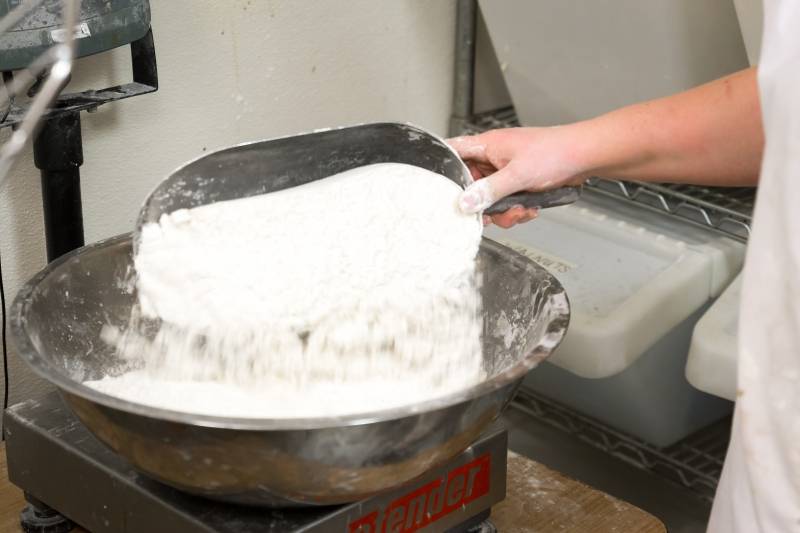
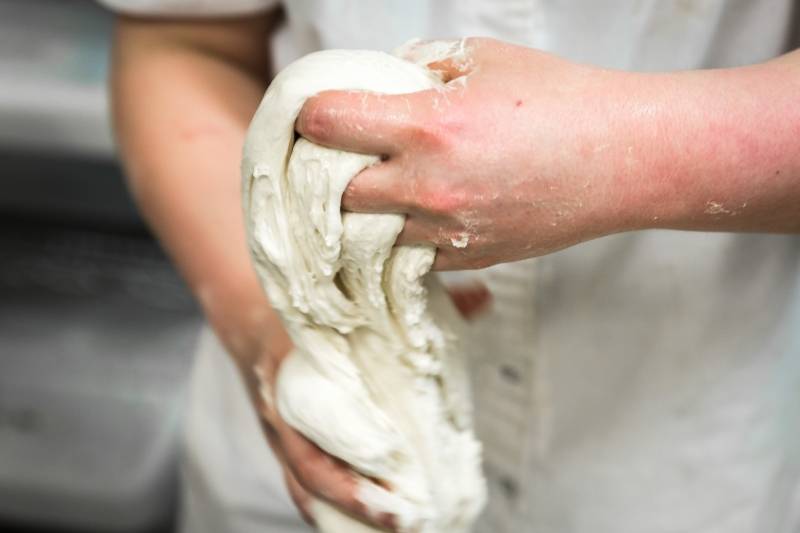

Click through the slideshow below to see the entire mixing process.
[gallery pekara_mixing]
Second, the mixed ingredients and starter are put into bins and stored in a refrigerator. The dough will sit overnight and ferment which is another reason why our bakehouse is special. See, commercial bakers will mix, shape, bake. Whereas our bakehouse allows the dough to ferment, giving it time to develop flavor, break down the gluten, and great those delicious air pockets in the bread. This follows the ancient way of bread making and is unique in our day and age.
I mentioned that gluten is broken down. You might be thinking, is this gluten free? Not completely. But most of the bakehouse bread is much lower in gluten than commercial breads and people with gluten allergies have reported that they do much better with our bakehouse bread. Be sure to ask the person you’re buying the bread from and they will be able to tell you about the gluten content.
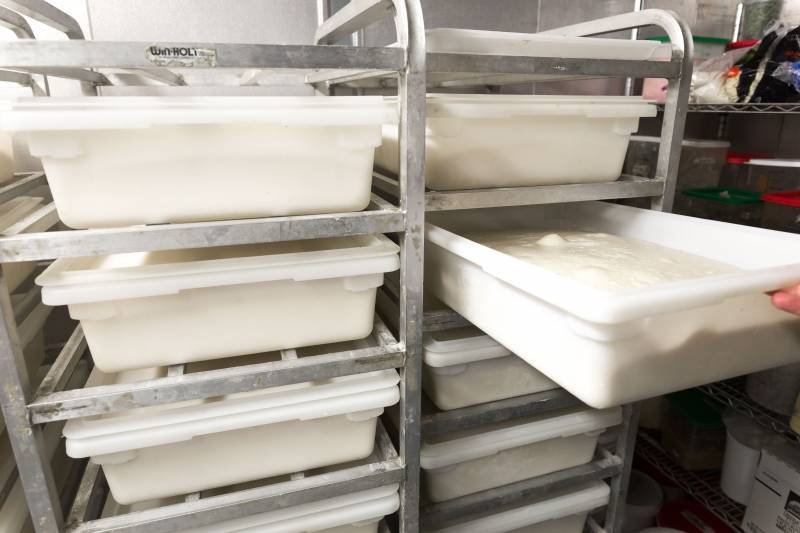
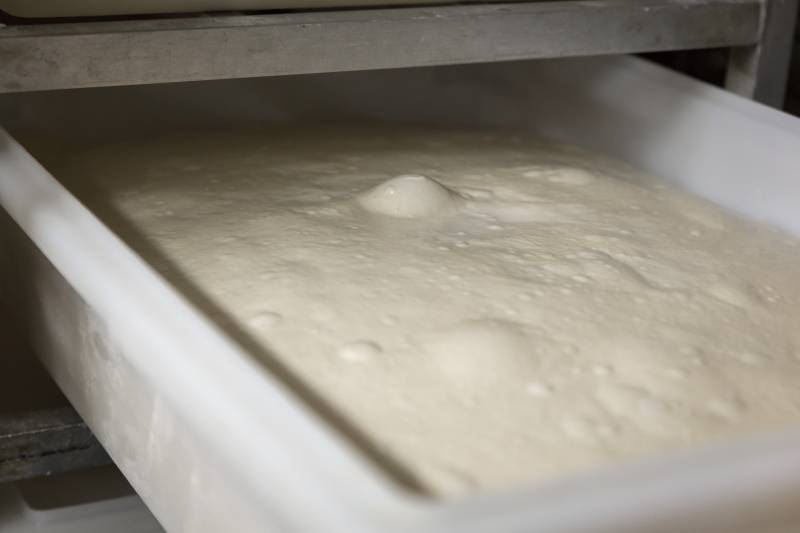
Third, the dough is cut, weighed and shaped for baking.
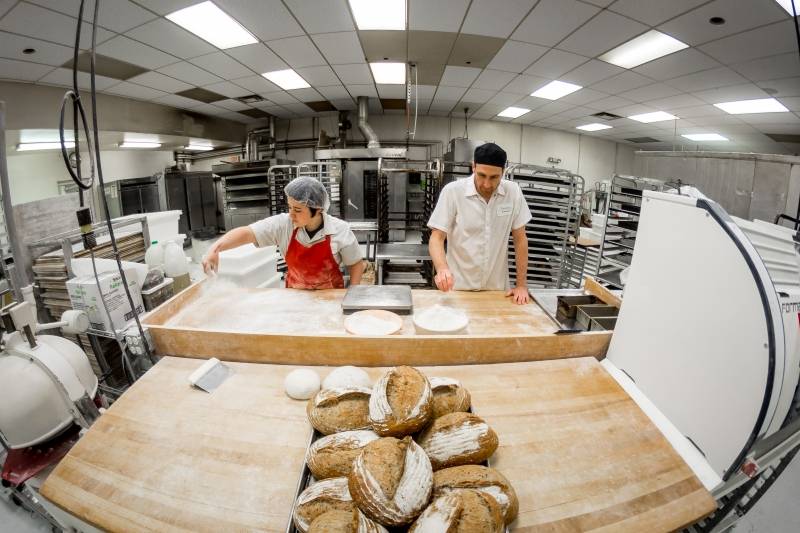
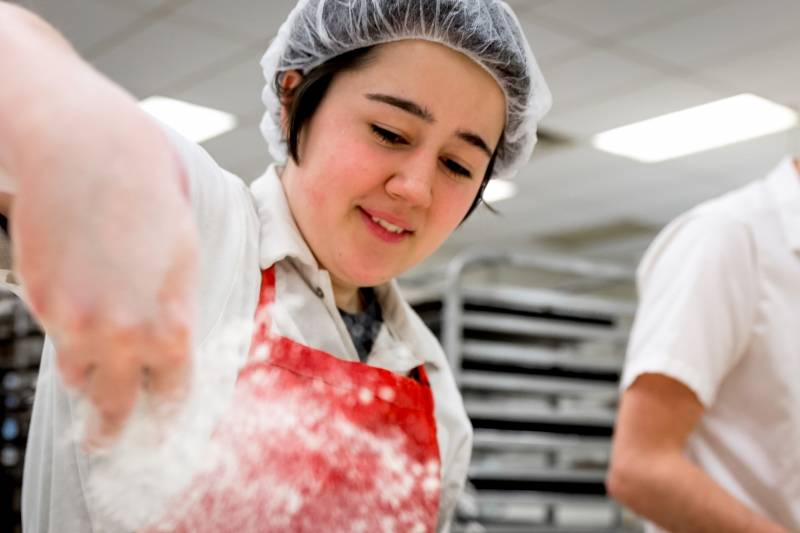
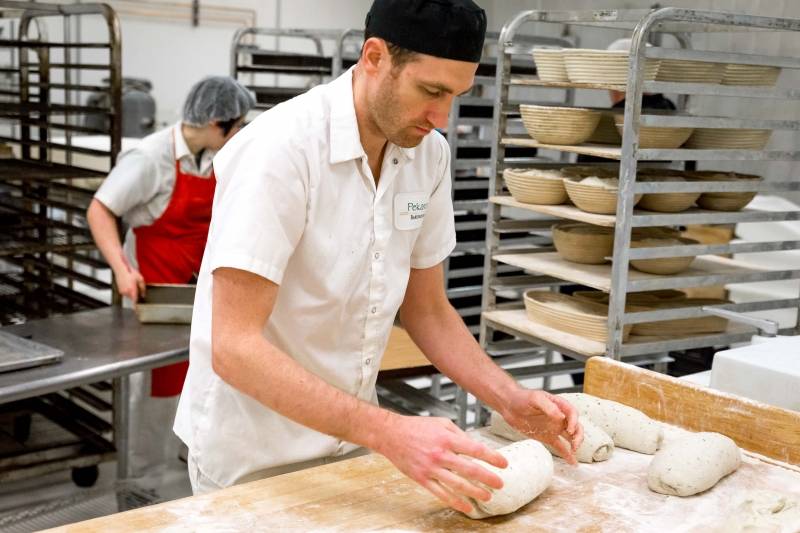
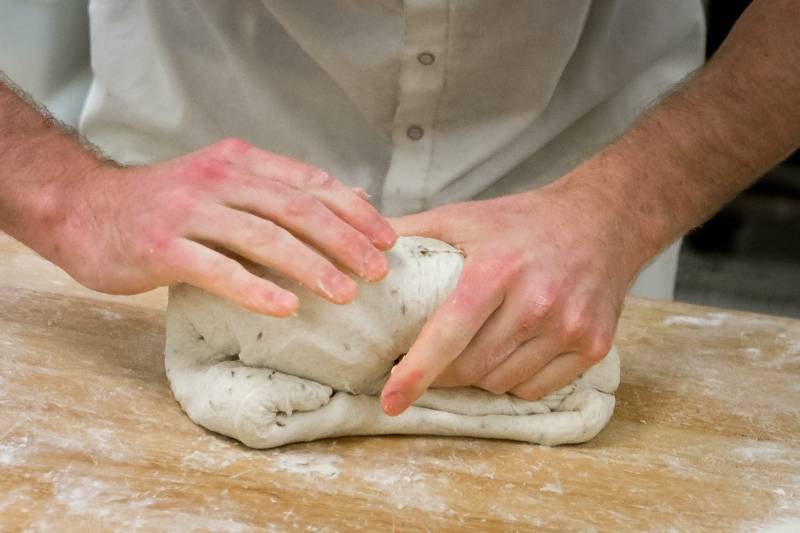
While I was at the bakehouse, head baker Lipson brought out a tub of dough that was overflowing. Check it out!
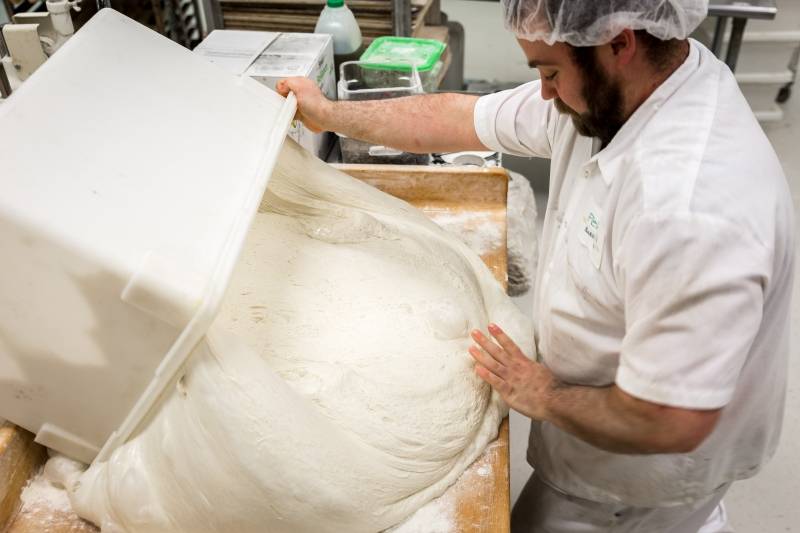
Click through the slideshow below to see the entire shaping process.
[gallery pekara_shaping]
Fourth, the bread needs to be placed on the “peel” which is a long pizza-pan-looking instrument that bakers use to put in and take bread out of the oven. After loading the oven with bread, it is steamed which allows for the crust not to cook too quick. Then, after some time (about 20 minutes) based on how the bread looks, it comes out to cool.
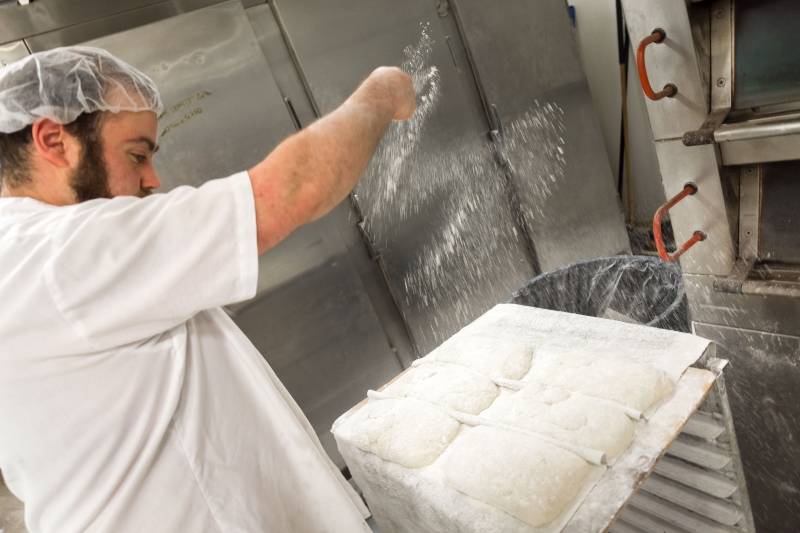
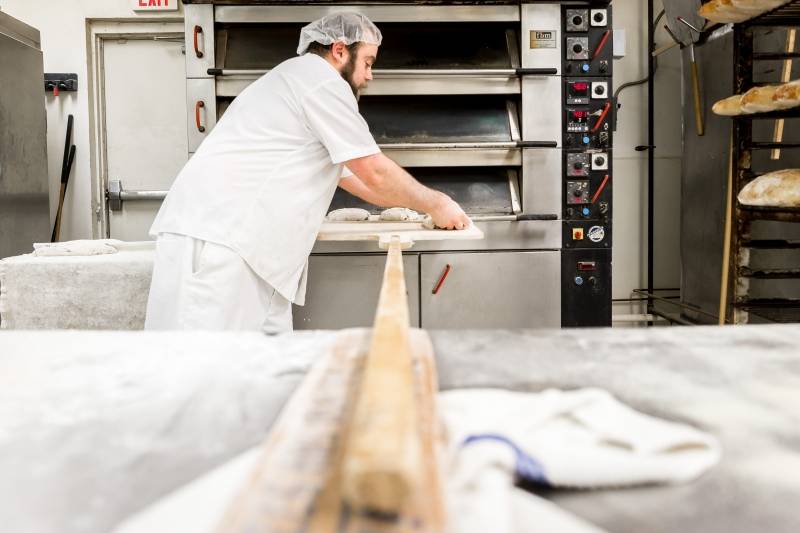
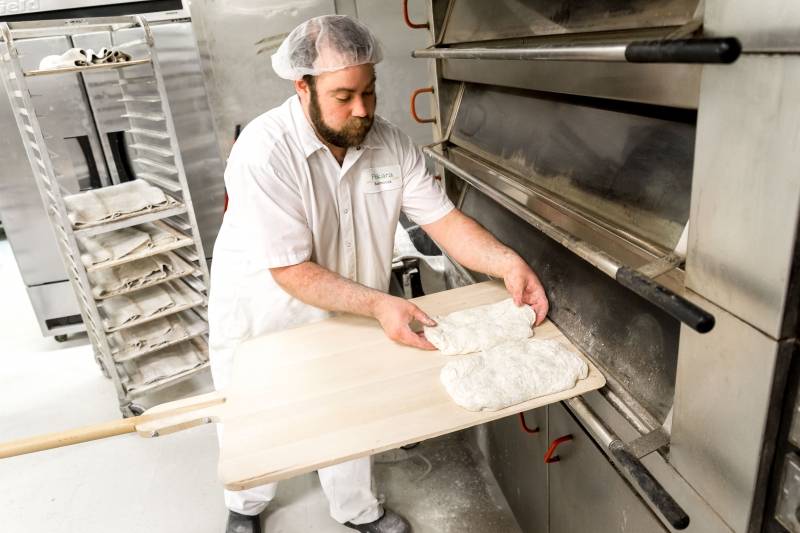
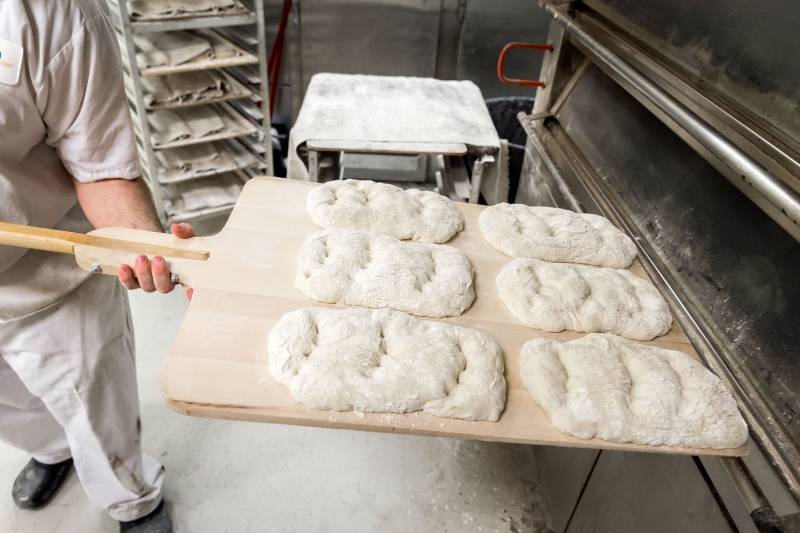
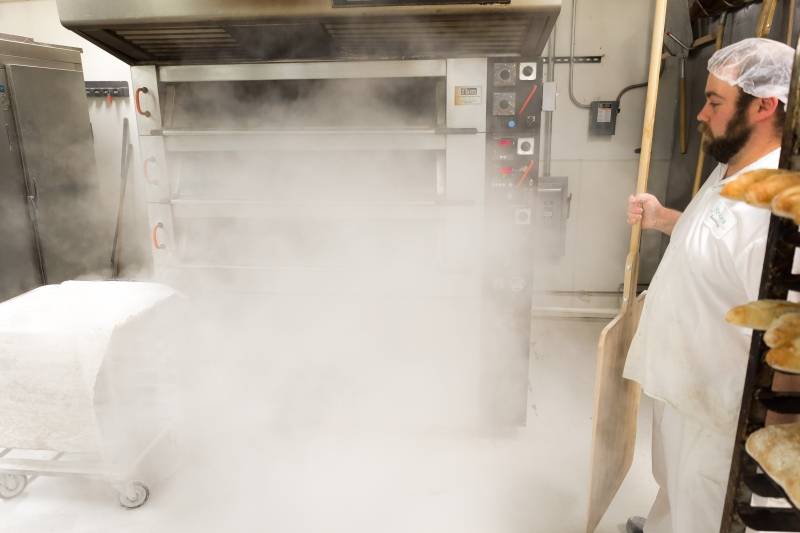
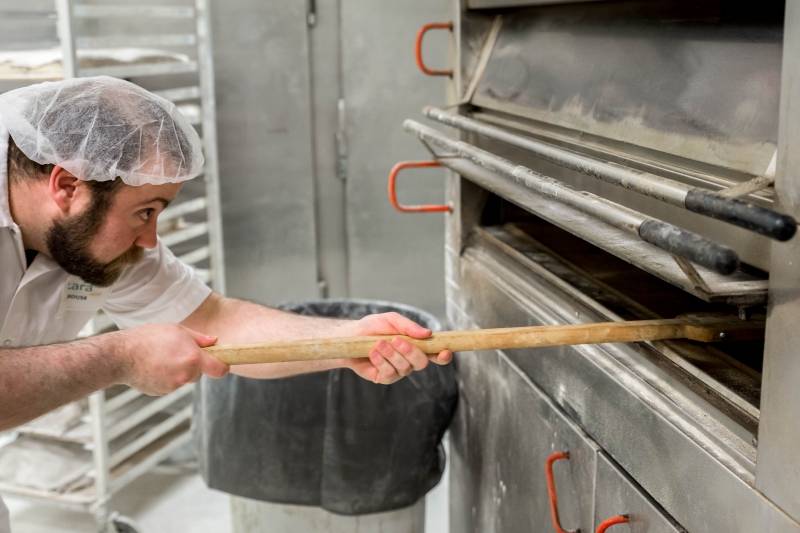
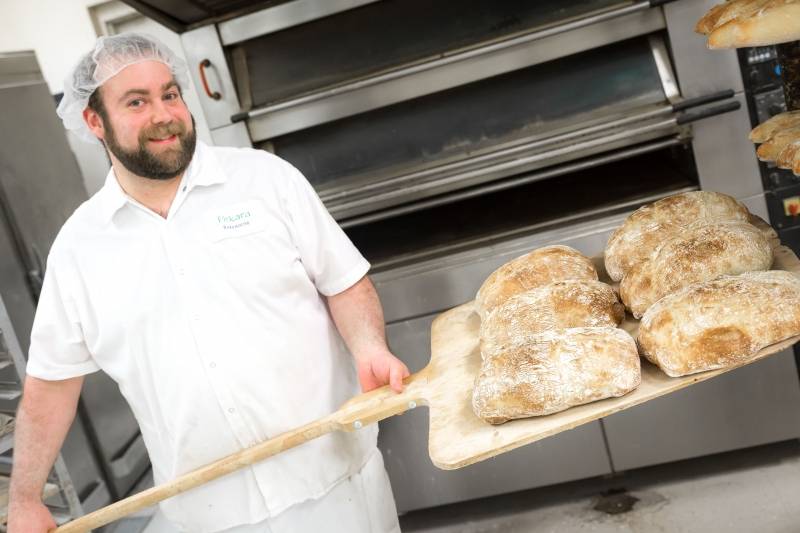
Click through the slideshow below to see the entire baking process.
[gallery pekara_baking]
Finally, bread is packaged and delivered to be sold. You can always catch the bakehouse selling bread at local farmers markets. I went out to Lincoln Square and talked to some customers about their bread purchases.
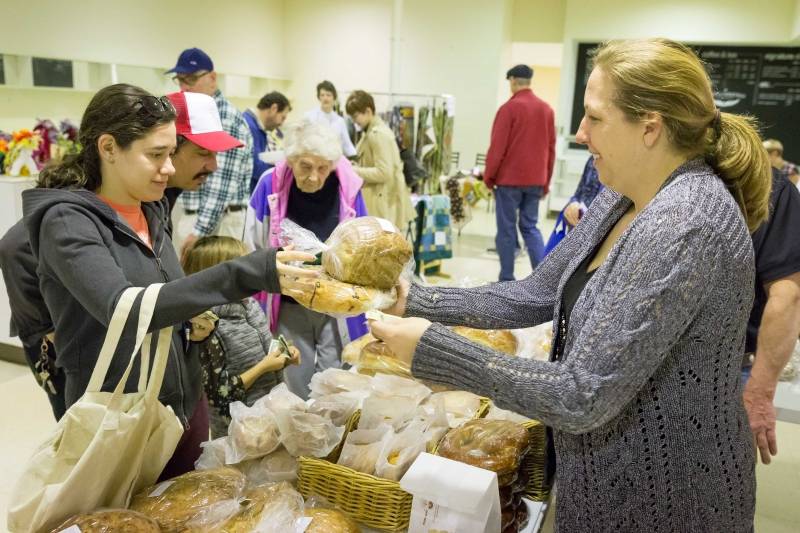
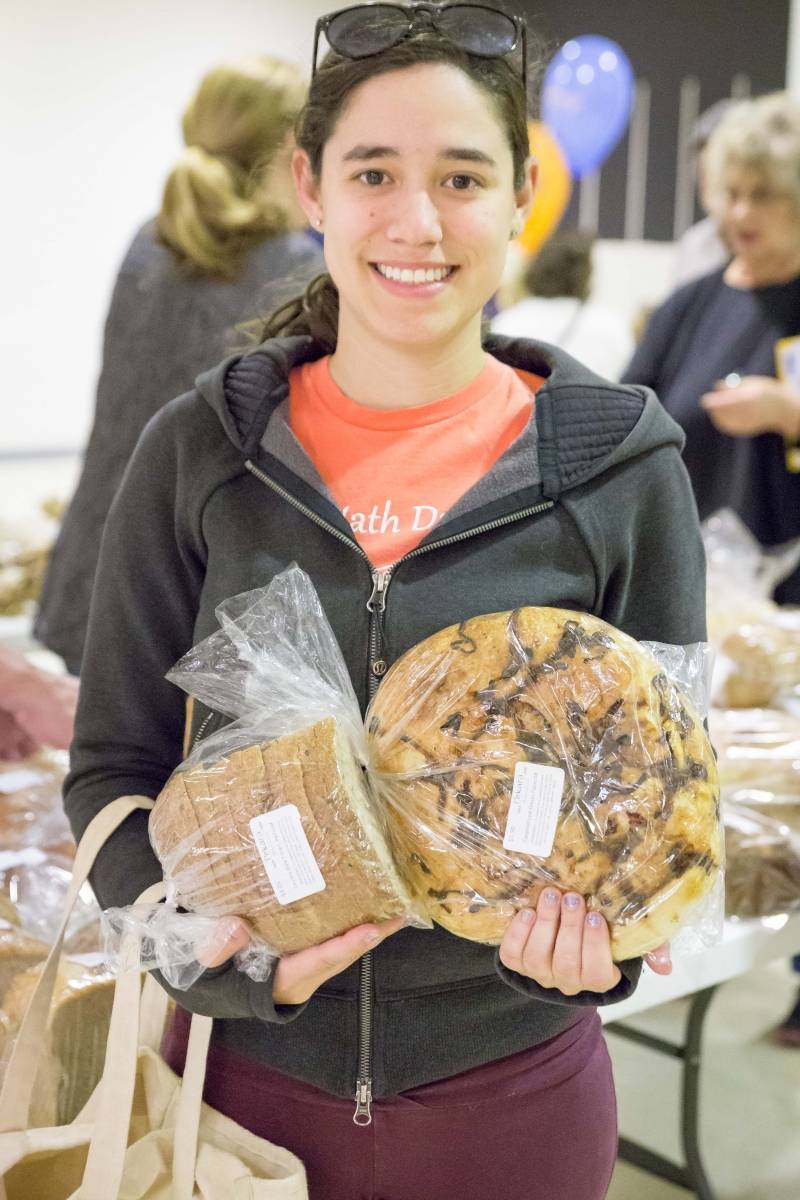
“I’ve bought bread from the bakehouse before. It’s really good. I am probably going to toast the caramelized onion bread and serve it with cheese. The loaves of bread are good too because they freeze really well. I’ll probably eat this over the next two weeks.”

“This is my first time buying bread from the bakehouse. I think I’ll take these home and put a spread on them. I am from Loda and just came here for the farmers market and these bagels looked delicious!”
My conclusion? The bakehouse is awesome. The bread is made by actual people, with local ingredients in an old world type of way. Plus it is delicious. You can buy the bread and other products locally. See the list below.
- Black Dog Smoke & Ale House
- Watson’s
- Hamilton Walker’s
- Espresso Royale
- Hammerhead Coffee
- Cafe Paradiso
- Cracked
- V. Picasso
- Urbana Market at the Square
- Champaign Farmers’ Market
- Common Ground Food Co-op
- Pekara Bakery and Bistro








